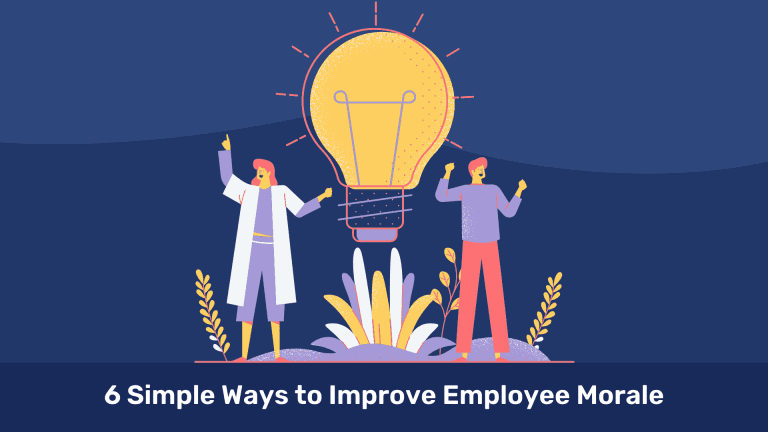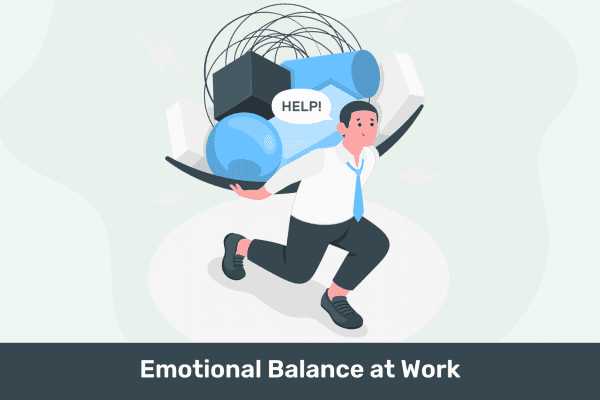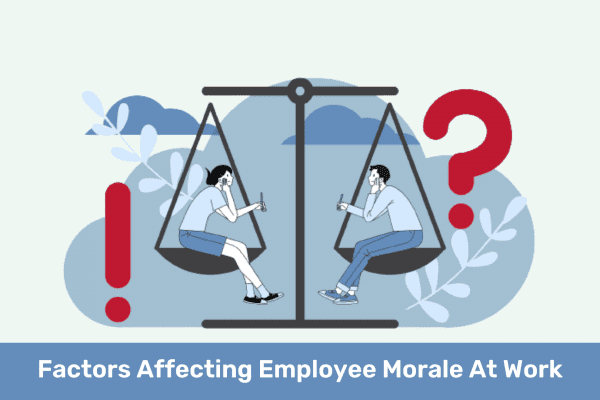What are the ways to improve employee morale? It is a major question and play a significant role in the success of any organization. Studies have shown that happy and satisfied employees are more engaged, productive, and likely to stay with their current employer.
On the other hand, low morale and job dissatisfaction can lead to decreased productivity, high turnover rates, and even a negative impact on an organization’s bottom line. Therefore, it is crucial for employers to focus on improving employee morale and job satisfaction.
Gallup estimates that it costs as much as twice an employee’s annual salary to replace them, when you consider the amount of time and effort that goes into training. All told, according to Gallup, US businesses lose a whopping $1 trillion per year due to voluntary turnover.
In this article, we will explore some proven strategies and best practices to help boost employee morale and satisfaction in the workplace.
What is Employee Morale?
Employee morale, often referred to as team or workplace morale, is a critical component of a healthy and productive work environment. It represents the overall mood, outlook, and attitude of employees within an organization. High morale indicates a positive and motivated workforce, while low morale suggests dissatisfaction and disengagement.
Key Elements of Employee Morale:
- Satisfaction: Employee morale is closely tied to job satisfaction. When employees are content with their work, they are more likely to have high morale. Job satisfaction is influenced by factors such as compensation, work-life balance, job security, and the overall work environment.
- Engagement: Engaged employees are enthusiastic about their work, committed to their organization, and eager to contribute their best efforts. High morale often correlates with high levels of employee engagement.
- Motivation: Morale is bolstered when employees feel motivated and inspired. Motivation can stem from recognition, opportunities for growth, and a sense of purpose in their roles.
- Well-Being: Employee morale is closely linked to well-being. When employees feel physically and mentally well, their morale tends to be higher. Employers who prioritize wellness programs and work-life balance often see positive impacts on morale.
- Team Dynamics: The quality of relationships and collaboration among team members also influences morale. A positive and supportive team culture can boost individual and collective morale.
Why Employee Morale Matters:
- Increased Productivity: High morale tends to correlate with higher levels of productivity. When employees are motivated and satisfied, they are more likely to perform at their best.
- Lower Turnover: A positive work environment and high morale can reduce employee turnover rates. Satisfied employees are less likely to seek employment elsewhere.
- Better Customer Service: Employees with high morale are more likely to provide excellent customer service. They are enthusiastic about representing their organization positively.
- Innovation and Creativity: Morale can foster an atmosphere of innovation and creativity. Employees who feel valued and supported are more likely to share ideas and take risks.
- Health and Well-Being: High morale can lead to improved physical and mental health outcomes for employees, reducing stress-related illnesses and absenteeism.
Employee morale is a complex and multifaceted aspect of the workplace. It reflects the overall happiness, engagement, and motivation of employees and plays a crucial role in shaping an organization’s culture, productivity, and long-term success. Fostering high morale requires a commitment to employee well-being and a positive work environment.
6 Simple ways to Improve Employee Morale
1. Be Transparent
Perhaps no other factor has more of a negative impact on morale than a perception that management is not transparent. When leaders avoid difficult conversations or hide problems, they are all but asking for employees to run for the exits.
Transparency also applies to relationships between employees and their supervisors. For example, one survey found that young workers are driven by performance feedback—as many as 71 times per year.
Organizations function best when their values are aligned at every level. If you want your teams working as a single unit to achieve shared goals, you must be transparent about what those goals actually are.
That sounds easy enough, but countless employees report that they are unsure why their work matters, or how their efforts are valued by the company. Being transparent about broader goals, and each team’s place in achieving them, goes a long way to boosting overall morale.
Cultivating transparency also requires humility from leadership. Everyone makes mistakes, from interns to mid-level managers to CEOs. Admitting when you were wrong does not project weakness; on the contrary, employees are drawn to and inspired by vulnerability from their leaders.
For one of the fastest ways to boost morale in the workplace, consider how you can improve transparency at all levels of the organization.
2. Communicate Constantly
Have you ever been blindsided by a major company announcement? It feels crummy to know the higher-ups were planning a big shake-up without consulting you or your team. More to the point, it feels like you lack control and clout.
Not all decisions can be made openly, of course, but the most successful organizations ensure their employees never feel alienated. They understand that when employees are communicated to effectively, they are far more likely to be aligned with the broader goals and shifts of the organization.
Effective communication can simply mean circulating a monthly newsletter and sharing regular company announcements. It also means checking in with your employees regularly to gauge their morale. Ask questions like:
How are you feeling about the direction of your team? How effectively do your values align with your manager’s? Are you facing any challenges at work? If so, how can we help? Or simply: Are you happy?
Regular, open channels of communication go a long way to ensuring your employees feel heard and valued, and it’s one of our tried-and-true ways to boost morale at work.
3. Recognize Employees
Engaged employees are productive employees. “Highly engaged organizations have double the rate of success of lower engaged organizations,” explains Harvard Business Review. Meanwhile, Gallup found that highly engaged teams show 21 percent greater profitability.
The statistics show that organizations cannot afford to ignore employee engagement, with an exhaustive report by The Engagement Institute finding that disengaged employees cost US companies up to $550 billion every single year.
Recognition not only boosts individual employee engagement, but it also has been found to increase productivity and loyalty to the company, leading to higher retention.”
Recognizing employees for their hard work is low cost and high impact. And with a corporate wellness program like Woliba, it’s incredibly easy. With one dashboard, you can give a shout out to employees who crushed a big project or presentation.
4. Establish a Rewards Program
Do you know the only thing better than being recognized for a job well done? It’s being rewarded for a job well done.
There are countless reasons why employee reward programs pay for themselves many times over. The first reason is straightforward: The promise of great rewards encourages employees to work harder. Whether it’s a reward for completing a wellness challenge or guiding your team through a IT migration, employee rewards are the one of the best ways to prevent the loss of valuable employees.
5. Harness Technology
Harnessing technology can help at the workplace in many ways, such as:
- Streamlining processes and increasing efficiency through automation and digital tools.
- Facilitating remote work and collaboration through video conferencing, instant messaging, and other communication platforms.
- Improving data management and analysis, leading to better decision-making and problem-solving.
- Enhancing customer experiences through digital channels, such as social media and chatbots.
- Enabling personalized and flexible work experiences, such as customized learning and development programs.
- Providing employees with access to real-time information and insights, leading to increased transparency and accountability.
- Enhancing workplace safety and security through smart technologies, such as sensors and biometrics.
By harnessing technology, companies can improve productivity, innovation, and employee engagement, leading to a competitive advantage in the market.
6. Offer Personalized Wellness
Work is for work and personal time is for everything else.
For too many years, this was the mantra of the typical workplace. If you wanted to get healthy and fit, you had to do it outside of company time.
Fortunately, the modern workplace takes a much more holistic approach to workplace wellbeing, guided by the knowledge that healthy employees are productive employees.
Promoting healthy habits isn’t just morally good—it’s good for business, too. Studies routinely show that employee wellness programs lower healthcare costs across the board while curbing the risk of lifestyle-related disease.
When employees are physically and mentally healthy, they show up for work engaged and excited for their day. According to a study by Aflac, 70 percent of employees enrolled in wellness programs report higher job satisfaction than those not enrolled.
Organizations that invest in wellness programs routinely see a major decrease in voluntary employee turnover—a key sign that employees are happy and content.
Final Thoughts
In the dynamic landscape of the modern workplace, employee morale serves as both a barometer of organizational health and a catalyst for success. By embracing these diverse ways to improve employee morale, businesses can create a harmonious, motivated, and engaged workforce.
This, in turn, leads to increased productivity, reduced turnover, and a workplace culture that thrives on positivity and collaboration. As you explore these strategies, remember that the journey to enhanced employee morale is a continuous one, marked by communication, recognition, and a genuine commitment to employee well-being.
At Woliba, we understand that employee morale is a cornerstone of workplace success. Our engagement platform offers a plethora of tools and resources to enhance morale, from recognition and appreciation programs to skill development opportunities. Let us help you create a thriving workplace where employees are motivated, satisfied, and fully engaged.
Connect with Woliba Today: Contact Woliba and embark on a journey to elevate your team’s morale and drive organizational success.





